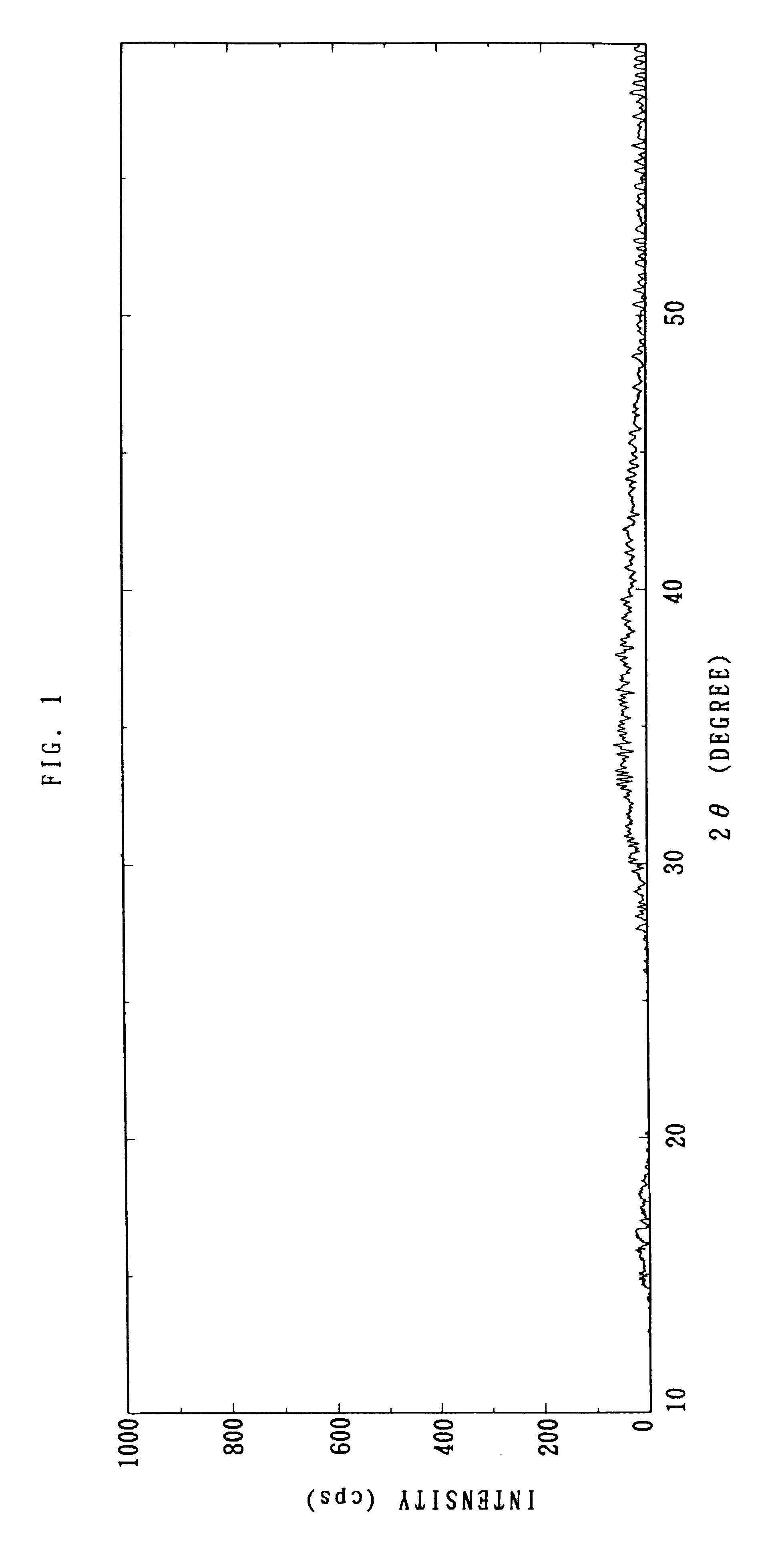Method for producing fine spherical particles of carbonate or hydroxide of nickel, cobalt or copper
a technology of carbonate or hydroxide and nickel, which is applied in the direction of nickel compounds, metal/metal-oxide/metal-hydroxide catalysts, physical/chemical process catalysts, etc., can solve the problems of difficult to obtain fine spherical particles of nickel carbonate in a stable manner, easy to break the emulsion not only on account of the neutralizer, and the possibility of obtaining fine spherical particles of nickel metal
- Summary
- Abstract
- Description
- Claims
- Application Information
AI Technical Summary
Problems solved by technology
Method used
Image
Examples
example 1
141 g of commercially available basic nickel carbonate (NiCO.sub.3.Ni(OH).sub.2.4H.sub.2 O, the same hereunder) and 242 g of ammonium hydrogencarbonate (NH.sub.4 HCO.sub.3) were added to 15% aqueous ammonia and stirred to prepare an aqueous ammonia-ammonium hydrogencarbonate solution of basic nickel carbonate (1.1 mol / L in terms of Ni) having a pH of 9.5.
30 g of a nonionic surfactant, polyoxyethylene sorbitan monooleate having an HLB value of 15 (RHEODOL TW-0120, available from Kao Corp.) was added to 200 g of the solution of nickel salt and stirred at a temperature of 50.degree. C. to dissolve the surfactant in the solution. Meanwhile, 50 g of a nonionic surfactant, sorbitan monooleate having an HLB value of 4.3 (RHEODOL SP-010, available from Kao Corp.) were added at a temperature of 80.degree. C. to 800 g of a non-aqueous medium, squalan (Super Squalane, available from K.K. Squatech) having a boiling point of about 280.degree. C. to dissolve the surfactant in the non-aqueous medi...
reference example 1
The powder of the spherical particles of basic nickel carbonate obtained in Example 1 was heated at a rate of 50.degree. C / hour and fired at a temperature of 600.degree. C. for 2 hours in an air atmosphere to provide particles of nickel oxide.
It was confirmed by an X-ray diffraction measurement that the particles were composed of nickel oxide. The particles of the nickel oxide were heated at a rate of 100.degree. C. / hour in a hydrogen stream provided with at a flow rate of 3L / minute and heated at a temperature of 600.degree. C. for one hour to reduce the oxide to provid fine spherical particles of nickel metal having a particle size of 0.1 to 5 .mu.m and an average particle size of 1.3 .mu.m.
It was confirmed by an X-ray diffraction diagram shown in FIG. 4 that the particles were composed of nickel metal. FIG. 5 is a scanning electron micrograph and FIG. 6 is a particle size distribution diagram of the particles of the nickel metal, respectively.
example 2
141 g of commercially available basic nickel carbonate and 331 g of ammonium hydrogencarbonate were added to 15% aqueous ammonia and stirred to prepare an aqueous ammonia-ammonium hydrogencarbonate solution of basic nickel carbonate (1.1 mol / L in terms of Ni) having a pH of 9.5. In the same manner as in Example 1 hereafter, spherical particles of basic nickel carbonate having a particle size of 0.1 to 5 .mu.m and an average particle size of 1.3 .mu.m were obtained.
PUM
| Property | Measurement | Unit |
|---|---|---|
| temperature | aaaaa | aaaaa |
| particle size | aaaaa | aaaaa |
| particle size | aaaaa | aaaaa |
Abstract
Description
Claims
Application Information
 Login to View More
Login to View More - R&D
- Intellectual Property
- Life Sciences
- Materials
- Tech Scout
- Unparalleled Data Quality
- Higher Quality Content
- 60% Fewer Hallucinations
Browse by: Latest US Patents, China's latest patents, Technical Efficacy Thesaurus, Application Domain, Technology Topic, Popular Technical Reports.
© 2025 PatSnap. All rights reserved.Legal|Privacy policy|Modern Slavery Act Transparency Statement|Sitemap|About US| Contact US: help@patsnap.com

